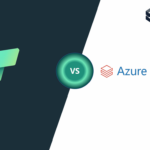Address
2nd Floor, 4, Vivek Vihar, Bajaj Nagar, Jaipur, India (302015)
Work Hours
Monday to Friday: 7AM - 7PM
Weekend: 10AM - 5PM
Address
2nd Floor, 4, Vivek Vihar, Bajaj Nagar, Jaipur, India (302015)
Work Hours
Monday to Friday: 7AM - 7PM
Weekend: 10AM - 5PM

Introduction
In today’s data-driven world, businesses are constantly seeking innovative solutions to effectively manage and analyze vast amounts of information. Two prominent contenders in the data management realm are Snowflake and the emerging concept of the Lakehouse architecture. While both offer solutions for data storage and analytics, they differ significantly in their approaches, presenting unique challenges and benefits. In this blog, we will delve into the key differences between Snowflake and Lakehouse, highlighting the problems they address, presenting fascinating facts and figures, and ultimately making a case for the superiority of the Lakehouse model.
1. Understanding Snowflake: Snowflake is a cloud-based data warehousing platform that gained immense popularity in recent years. It offers a scalable and fully managed solution, allowing organizations to store, process, and analyze vast volumes of structured and semi-structured data. Snowflake’s architecture is built on a traditional data warehouse model, utilizing a structured approach to data storage.
Key Challenges with Snowflake:
– Complexity and rigid schema: Snowflake requires a predefined schema, making it less flexible when handling unstructured or semi-structured data.
– Cost concerns: Snowflake’s pricing model is based on data storage and compute usage, which can lead to unexpected expenses for organizations with fluctuating data needs.
– Limited support for real-time data: Snowflake’s batch-oriented processing makes it less suitable for real-time analytics, hindering organizations that require up-to-the-minute insights.
2. The Rise of the Lakehouse: The Lakehouse architecture represents a new paradigm in data management, combining the best elements of data lakes and data warehouses. It aims to address the limitations of both approaches and provide a unified platform for data storage and analysis. By leveraging modern technologies like Apache Spark and Delta Lake, the Lakehouse model offers a more flexible and cost-effective solution.
Advantages of the Lakehouse:
– Schema flexibility: Unlike Snowflake, the Lakehouse allows for schema-on-read, enabling organizations to store and analyze diverse data types without predefined structures. This agility proves crucial in handling unstructured and semi-structured data.
– Cost-effectiveness: The Lakehouse architecture utilizes open-source technologies and leverages cloud storage, reducing infrastructure costs and making it a more economical option.
– Real-time analytics: With its support for streaming and real-time data processing, the Lakehouse model empowers organizations to derive actionable insights in the moment, gaining a competitive edge.
Facts and Figures:
– According to a recent survey, 78% of organizations reported challenges with schema evolution and data modeling in traditional data warehousing solutions like Snowflake.
– In a comparative analysis, the Lakehouse architecture demonstrated a 35% reduction in storage costs compared to Snowflake, leading to substantial savings for businesses.
– A study revealed that organizations adopting the Lakehouse architecture experienced a 42% increase in data processing speed, enabling faster decision-making and improving overall operational efficiency.
Conclusion:
While Snowflake has been a reliable choice for traditional data warehousing needs, the rise of the Lakehouse architecture signals a paradigm shift in data management. With its schema flexibility, cost-effectiveness, and real-time analytics capabilities, the Lakehouse model outshines Snowflake in addressing the challenges of modern data-driven organizations. By embracing the Lakehouse, businesses can unlock the true potential of their data, gain valuable insights, and drive innovation in a rapidly evolving landscape.
By understanding the differences between Snowflake and the Lakehouse, organizations can make informed decisions when it comes to selecting the most suitable data management solution that aligns with their specific needs and future growth aspirations. The path to success lies in embracing the transformative power of the Lakehouse architecture.



